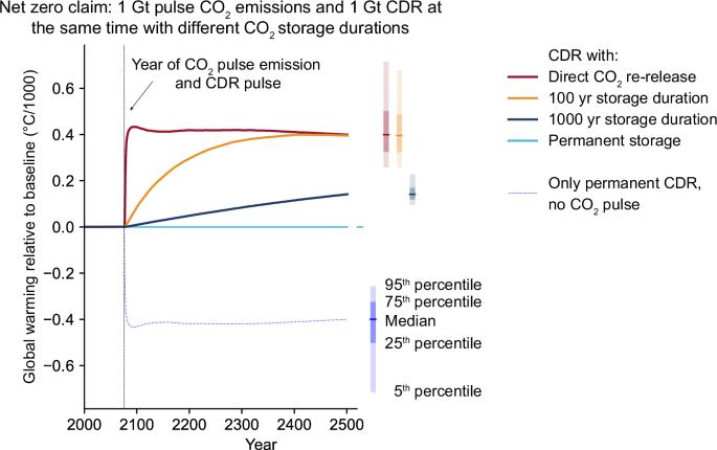
Follow India Renewable Energy News on WhatsApp for exclusive updates on clean energy news and insights
Climate Neutrality Demands Annual 7-9 Gigatons (Gt) of Carbon Removal Capacity
Jan 25, 2025
The global journey to climate neutrality demands an annual 7-9 gigatons (Gt) of carbon removal capacity—comparable to the size of today’s thermal coal market. To address this monumental challenge, the Climate Leadership Coalition (CLC) has released a pivotal report, "Carbon Removal and Utilisation in the Nordic Countries: Status, Outlook, and Policies Needed."
The report examines the potential of Nordic countries to become frontrunners in carbon dioxide removal (CDR) and carbon capture and utilization (CCU). Leveraging their innovation-driven economies and renewable energy resources, these countries are already home to a significant number of projects in various stages of development. However, many of these initiatives face challenges due to inadequate policy support, raising concerns about their long-term viability.
The report identifies key CDR and CCU technologies with strong potential for scaling in Nordic countries:
- Bioenergy with Carbon Capture and Storage (BECCS)
- Direct Air Capture and Carbon Storage (DACCS)
- Biochar
- Various CCU technologies, including synthetic fuels and materials
These technologies represent critical tools for achieving both emissions reductions and sustainable utilization of captured carbon.
To unlock the full potential of carbon removal and utilization, the CLC outlines several recommendations for Nordic and EU policymakers:
- Set Ambitious Targets: Develop separate, ambitious targets for carbon removals and emissions reductions.
- Prepare National Strategies: Formulate clear national strategies for CDR and CCU to provide a cohesive policy framework.
- Provide Early-Stage Support: Secure demand for carbon removal and offer financial support to projects during their early stages of development.
- Support CCU Technologies: Invest in CCU to strengthen synthetic fuel and material markets alongside carbon removal efforts.
- Enhance Nordic Cooperation: Foster cross-border collaborations to build resilient value chains for carbon removal and utilization technologies.
- Ensure Economic Viability: Create robust business cases for solutions as EU-level compliance markets evolve.
- Recognize Biogenic and Mixed-Source Projects: Advocate for the inclusion of biogenic CO? and mixed-source carbon projects within EU frameworks.
The report emphasizes that policy intervention is critical to ensure these technologies move beyond the pilot phase and achieve global impact. Strengthening Nordic leadership in CDR and CCU could serve as a model for other regions, fostering a collaborative approach to reaching climate neutrality. By implementing these recommendations, Nordic countries can position themselves as global pioneers in the fight against climate change, driving innovation and shaping sustainable markets for the future.